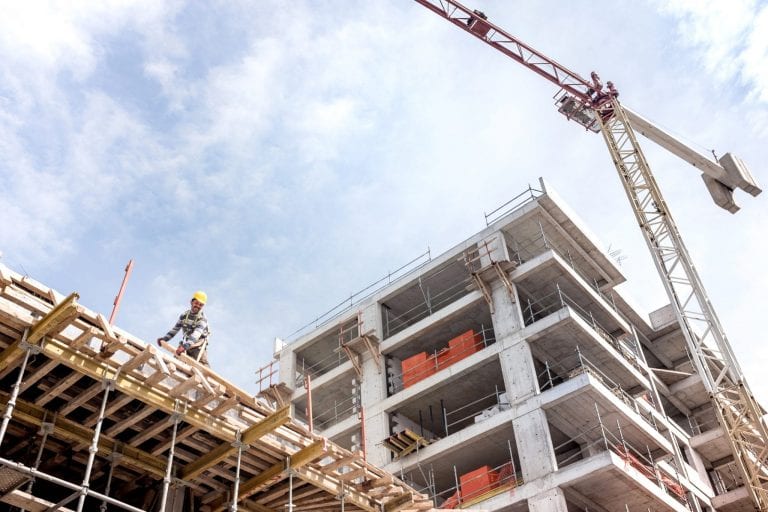
For solid and consistent business success in a competitive construction market, it’s vital that you remain aware of statistics and data. These recent findings highlight the state of construction around Texas and our nation, which will prove valuable in your decision-making when it comes to partnerships, certifications, and expansion efforts. Whether you are a general contractor or subcontractor, you need to know the current statistics for this industry.
The State of Construction
Monthly construction spending:
Total Construction
Construction spending during January 2022 was estimated at a seasonally adjusted annual rate of $1,677.2 billion, 1.3 percent (±0.8 percent) above the revised December estimate of $1,655.8 billion. The January figure is 8.2 percent (±1.2 percent) above the January 2021 estimate of $1,549.8 billion.
Private Construction
Spending on private construction was at a seasonally adjusted annual rate of $1,326.5 billion, 1.5 percent (±0.5 percent) above the revised December estimate of $1,307.1 billion. Residential construction was at a seasonally adjusted annual rate of $829.4 billion in January, 1.3 percent (±1.3 percent)* above the revised December estimate of $819.0 billion. Nonresidential construction was at a seasonally adjusted annual rate of $497.2 billion in January, 1.8 percent (±0.5 percent) above the revised December estimate of $488.2 billion.
Public Construction
In January, the estimated seasonally adjusted annual rate of public construction spending was $350.7 billion, 0.6 percent (±1.5 percent)* above the revised December estimate of $348.7 billion. Educational construction was at a seasonally adjusted annual rate of $80.9 billion, virtually unchanged from (±1.8 percent)* the revised December estimate of $81.0 billion. Highway construction was at a seasonally adjusted annual rate of $105.3 billion, 0.1 percent (±4.1 percent)* below the revised December estimate of $105.5 billion.
The February 2022 Monthly Construction Spending Report is scheduled for release on April 1, 2022. View the full schedule in the Economic Briefing Room at www.census.gov/economic-indicators. The full text and tables for this release can be found at www.census.gov/constructionspending.
Source: The U.S. Census Bureau, March 2022
Focusing on our nation, specifically Texas, let’s look at some of the economic impacts of construction:
- In Texas, construction contributed $100.9 billion (5.3%) of the state’s GDP of $1.9 trillion. There were 706,000 construction firms in the U.S. in 2017, including 43,859 in Texas.
- Private nonresidential spending in Texas totaled $45.4 billion in 2019. State and local spending totaled $36.5 billion.
- Construction jobs pay well. In Texas, 4 out of the 5 most numerous construction occupations had higher median pay than the median for all employees in the state in 2019.
Source: Ken Simonson, Chief Economist, AGC of America, ken.simonson@agc.org, from Bureau of Economic Analysis (GDP); Census Bureau (spending); Bureau of Labor Statistics (national and state employment, median wages); AGC (workforce survey).
Market trends and challenges:
Contractors see growing and intense difficulties finding skilled workers and are paying more to attract them. A majority (62%) of contractors report high difficulty finding skilled workers, up from 55% who said the same last quarter (and up 20 points year-over-year). Over half (56%) of contractors report a high degree of concern about their workers having adequate skill levels, up six points from last quarter and 20 points year-over-year.
Almost all (95%) contractors are experiencing at least one product shortage, up from 93% last quarter and up 24 points (71%) who said the same a year ago. The product which most contractors are experiencing a shortage in is steel (27%), followed by roofing at 19%.
Contractors still see growing profits. Contractors expecting an increase in profit margin over the next 12 months stayed the same (24%) as last quarter, while those expecting profits to remain the same rose three points to 66%. Ten percent expect their profit margin to decrease over that time (down three points from Q3).
Contractors say they are seeing big impacts from COVID-19. A majority say that less availability of building products (60%) and an increase in worker shortages (52%) are top concerns related to the pandemic. Of relatively less concern are the pandemic’s impact on worker health and safety (35%), more project shutdowns/delays (30%), and fewer projects (19%).
Source: U.S. Chamber Commercial Construction Index, Q4 2021
Profit, revenue, and financing:
Despite a small dip in the key indicator of revenue, most contractors anticipate steady revenue despite growing uncertainties over labor and materials costs. Very few see declining revenue ahead.
A majority of contractors (58%) expect their revenues to remain about the same in the next 12 months (down 5 points from 2021 Q3). While 35% of contractors expect their revenue to increase in the next year (down two percentage points from last quarter), and just 7% of contractors anticipate declining revenues (down three points from Q3).
Those expecting changes predict they will be small. Of those expecting a revenue increase, 34% believe it will be an increase of up to 3%. While 21% think it will be an increase of 10% or more. Of those expecting a decrease, 33% believe it will be a decrease of up to 3%, while 29% think it will be a decrease of 10% or more.
Most contractors see little change in access to financing and anticipate it will remain the same in the near future. However, some say access to working capital will get more difficult.
Most (61%) contractors expect their access to working capital financing will remain about the same in the next six months, while just 4% expect that it will get easier. Meanwhile, 23% of contractors believe that access to working capital financing will get more difficult (up six points from 17% saying the same last quarter).
Source: U.S. Chamber Commercial Construction Index, Q4 2021
Global construction market size in 2020, with forecasts up until 2030:
The revenue of the global construction industry is expected to grow steadily over the next years. In 2030, it is projected to be more than twice as big as it was in 2020. The size of the construction market amounted to 6.4 trillion U.S. dollars in 2020, and it is expected to reach 14.4 trillion in 2030.
Source: Statista
If this information is new to you, then it’s important you stay ahead of the competitive construction arena by expanding your knowledge, reviewing information on a regular basis as the industry is everchanging. So, after this read, are you prepared for the state of construction now and in the future?
Sources:
U.S. Census Bureau
Statista
The Associated General Contractors of America
U.S. Chamber Commercial Construction







